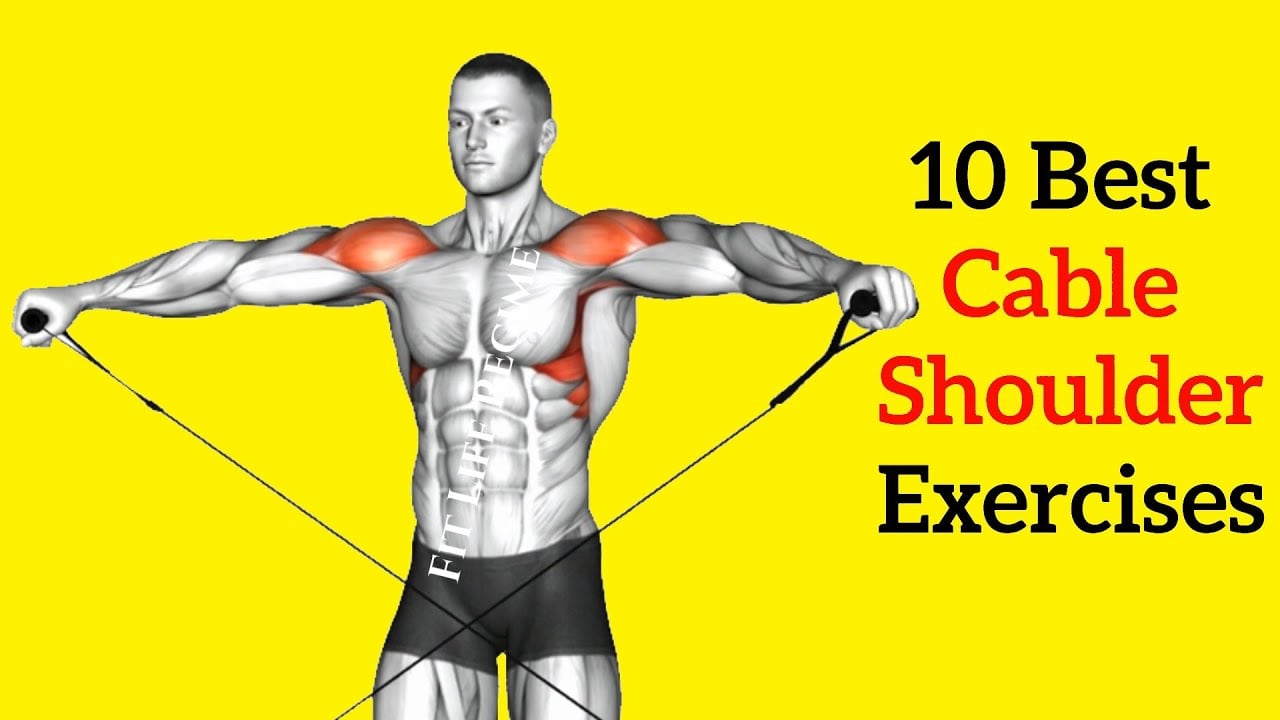The Cable shoulder press is a variation of the shoulder or overhead press, and it’s one of the best exercises for building shoulder size and strength.
It is one of the best exercises for targeting all three deltoid muscle heads (anterior, lateral, and posterior). Even though you might not see many people use the cable machine for shoulder presses, it’s a great exercise for good stimulation and variety.
One of the benefits of shoulder presses with a cable is that the load is more evenly distributed, and your shoulder gets a constant load (uninterrupted time under tension) throughout the range of motion.
It offers almost unmatched versatility because you can easily change the load, angle, grip positioning, and body positioning.
When done with the proper form and technique, cable shoulder presses can significantly increase the strength of the deltoid and tricep and core muscles.
Want to take your gains to the next level? Discover your daily calorie needs with our free TDEE calculator
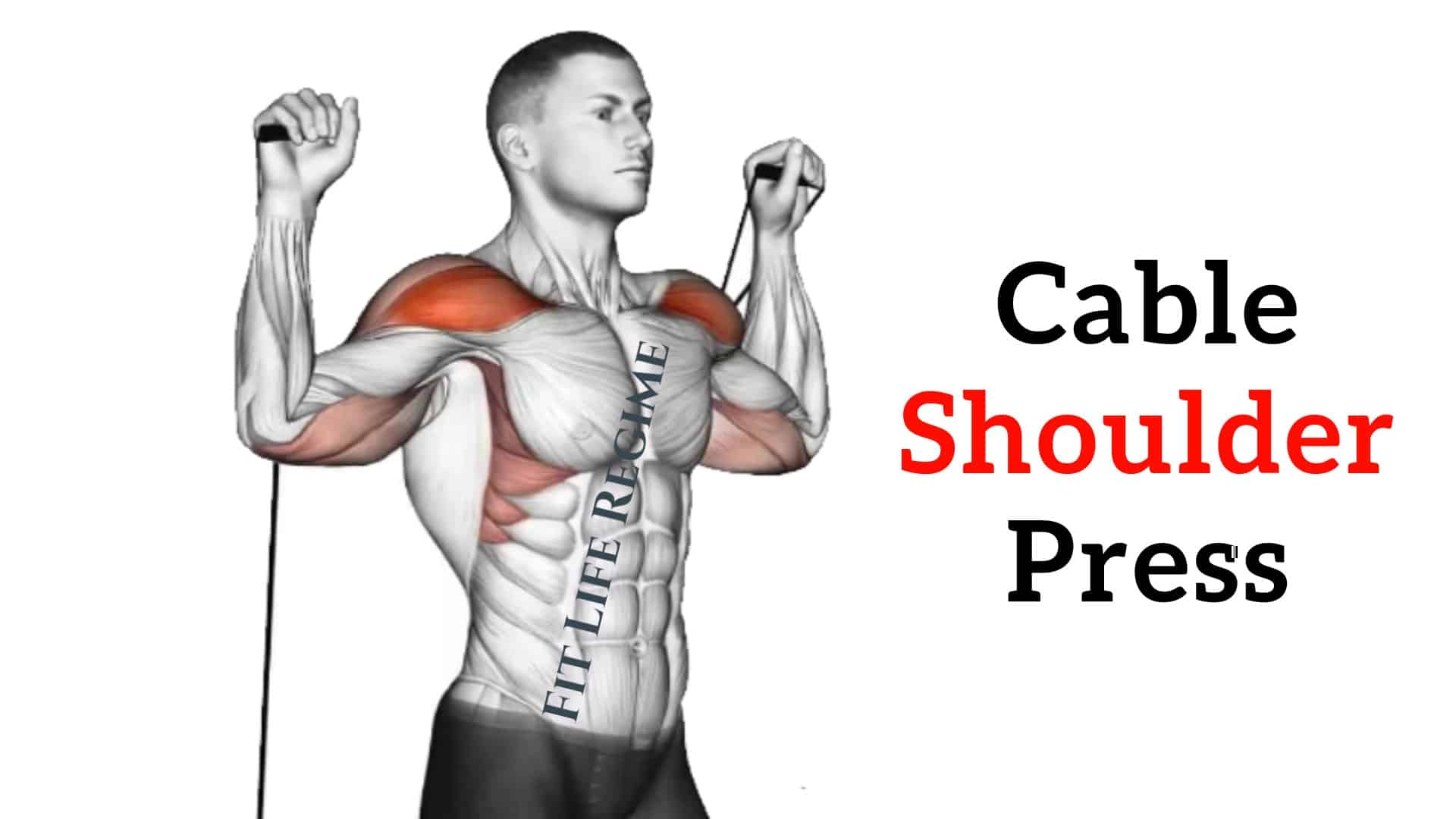
Shoulder cable Press Muscles Worked
- Primarily muscles worked: Deltoid muscles.
- Secondary muscles worked: Triceps brachii and upper pectorals
- Synergist and stabilizer muscles: Rotator cuff muscles, Core Muscles (Rectus Abdominis, Obliques), and Serratus Anterior.
How To Do Cable Shoulder Press
- Stand between two low pulley cable machines with two cables attached.
- Bend your knees slightly and grasp a handle in each hand. Bring them up to shoulder height, elbows bent and close to your body.
- Stand tall between the two cables, feet shoulder-width apart. Engage your core and keep your posture proud—think superhero stance.
- Keep your back straight, chest high, and eyes forward. Push the handles up and slightly forward, extending your arms overhead. Now, extend your arms overhead.
- At the end of the exercise, your arms should be almost fully extended (but don’t lock your elbows). Focus on squeezing your shoulder muscles. Hold it for a second.
- Hold for a count at the top, then return to the starting position.
- Keep going for your desired number of repetitions—aim for between 8 and 12 for strength training.
Proper Form And Tips
- Try to stand as close to the cable machine as possible. Standing too far away can cause the weight to pull you back, placing stress on your lower back and making the exercise more difficult.
- Keep your elbows slightly in front of your body rather than flaring them out excessively. This alignment minimizes shoulder joint stress.
- Avoid locking out your elbows completely; a slight bend keeps the muscles tense.
- Focus on pressing with your deltoids, not your traps. If you find yourself shrugging, it’s a sign to lower the weight and refocus on proper form.
- Experiment with neutral, pronated (palms down), and supinated (palms up) grips. Each variation emphasizes different parts of the deltoid muscle.
- Don’t lean back too far; try to keep your chest up and back straight throughout the movement.
- Keep a controlled motion and avoid jerky movements.
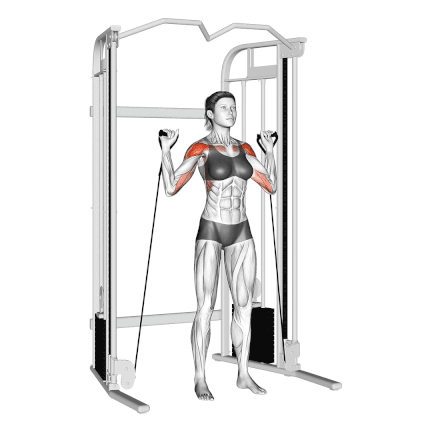
To Stay Motivated: 150+ Gym Workout Motivational Quotes To Stay Fit
Cable Shoulder Press Variations
Cable shoulder press variations allow you to move through an extensive range of motion, which can help improve flexibility and mobility in the shoulder joint.
1. Kneeling Cable Shoulder Press
This is a great way to ensure you keep strict form while doing the overhead press. The kneeling position eliminates the temptation to use leg drive or momentum to push the weight up because it removes the lower body from the equation.
This ensures that the work is focused solely on the shoulders and upper body.
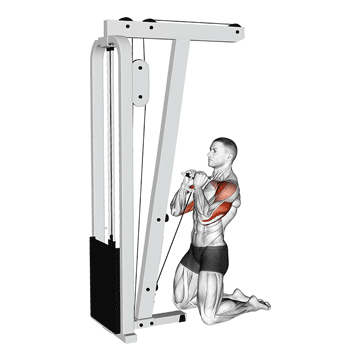
2. One Arm Cable Twisting Overhead Press
The one-arm cable shoulder twisting press is a very effective shoulder press variation that works the anterior (front) deltoids.
The twisting motion inherently activates your core muscles more than a standard shoulder press. This helps improve core stability and rotational strength.
It is brilliant for developing unilateral upper-body strength, improving balance, and strengthening and stabilizing the core.
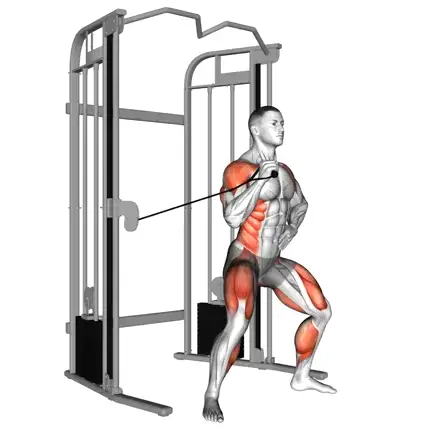
3. Single Arm Cable Shoulder Press
The alternating cable overhead press can be performed in numerous ways. If you only have one cable tower available, you could do one arm at a time. Alternatively, you could do two cables, pressing up with a neutral grip to target the front delts and triceps more.
The single-arm shoulder press is a solid, compound movement that works the deltoid (front and lateral delt), the triceps, and all the supporting muscles throughout the body.
The single-arm dumbbell shoulder press is a unilateral exercise that increases shoulder strength, stability, and symmetry. Doing the exercise with one arm at a time will work your core throughout the range of motion.
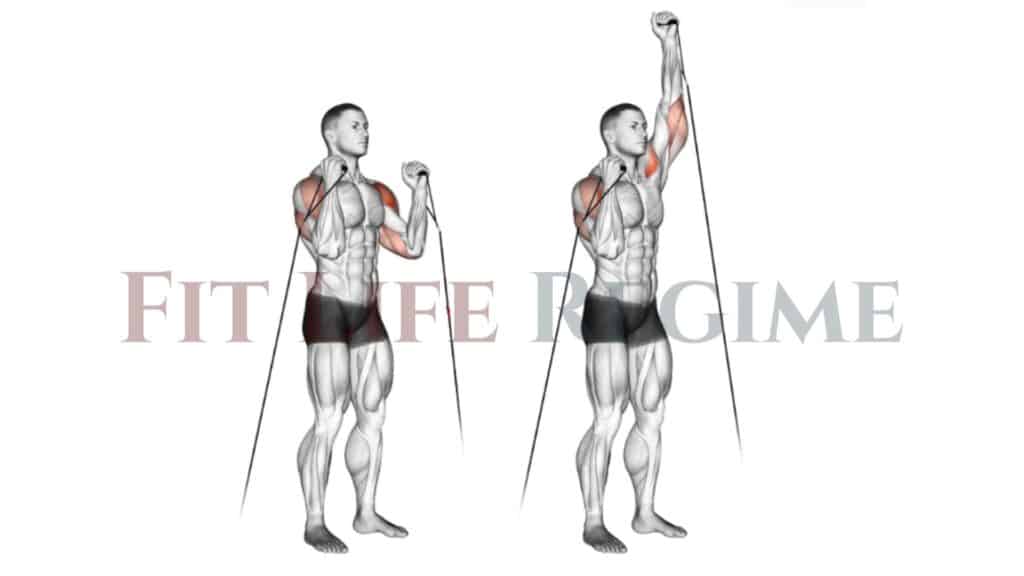

Manish is a NASM-certified fitness and nutrition coach with over 10 years of experience in weight lifting and fat loss fitness coaching. He specializes in gym-based training and has a lot of knowledge about exercise, lifting technique, biomechanics, and more.
Through “Fit Life Regime,” he generously shares the insights he’s gained over a decade in the field. His goal is to equip others with the knowledge to start their own fitness journey.

